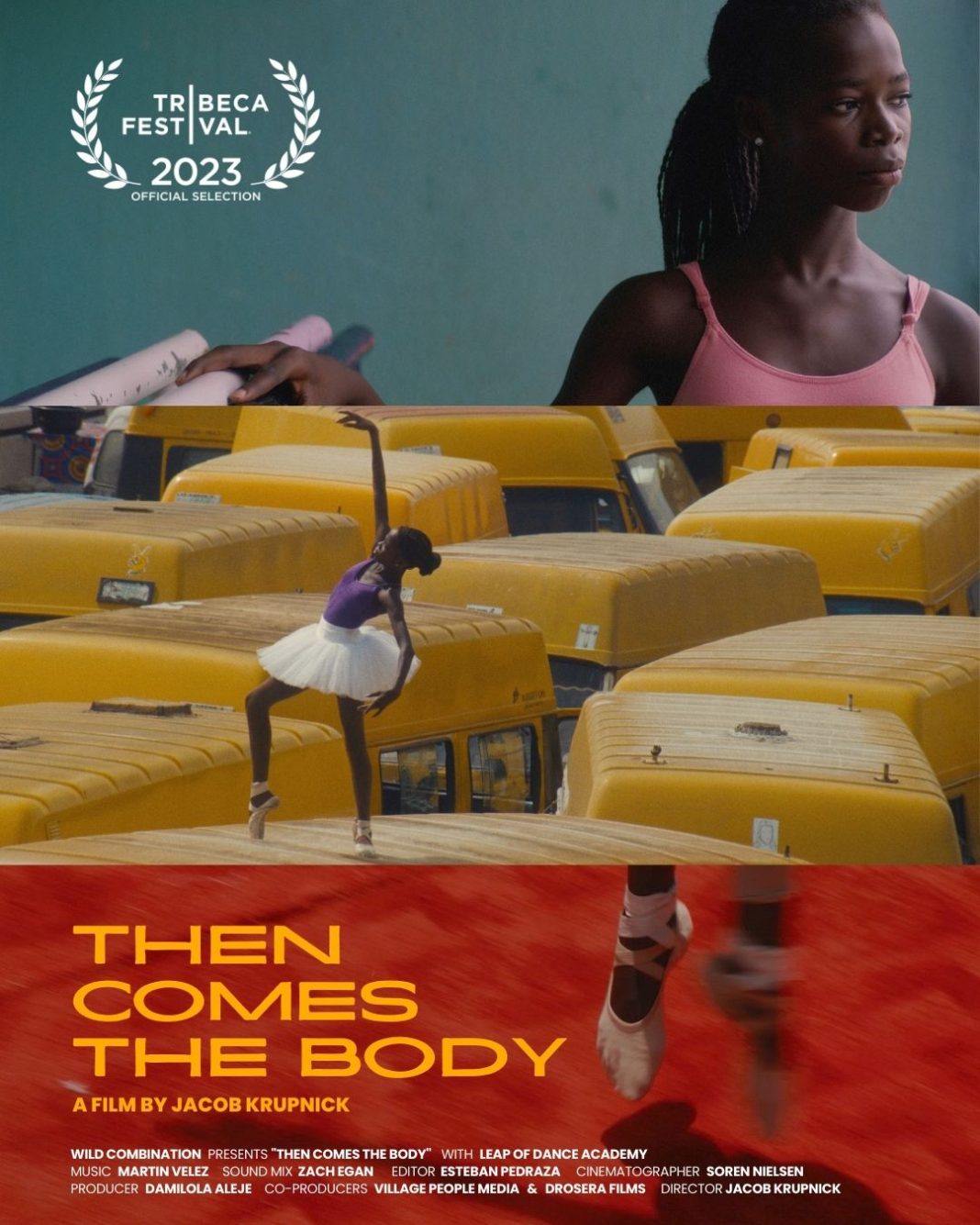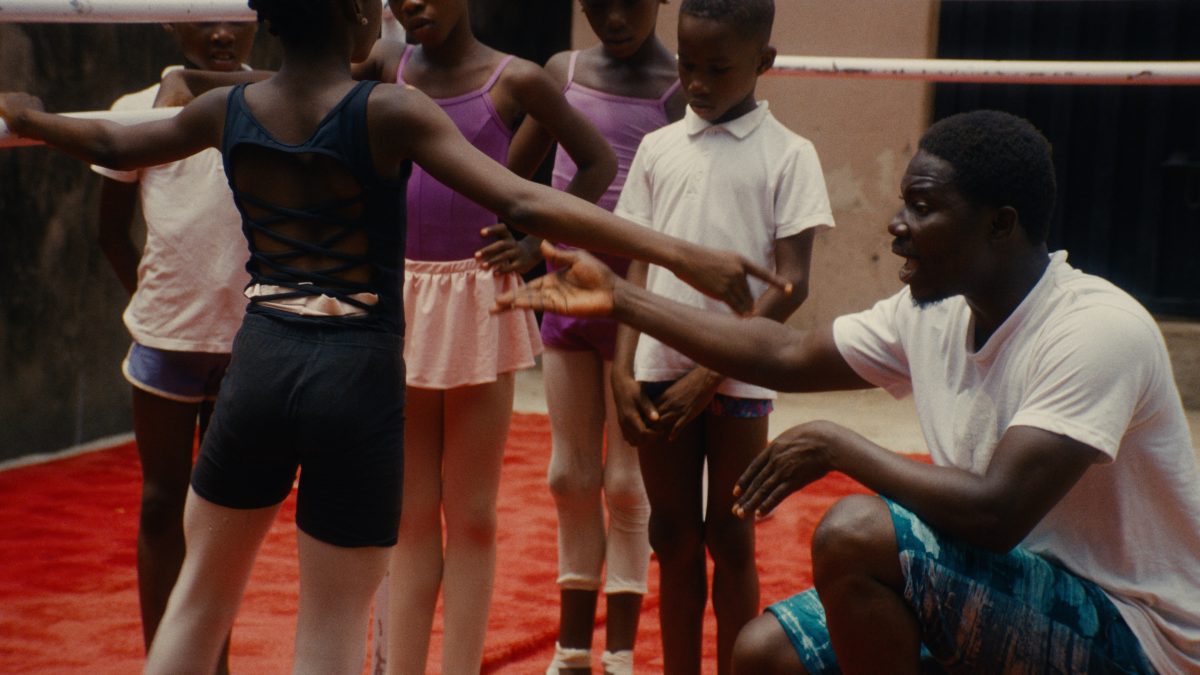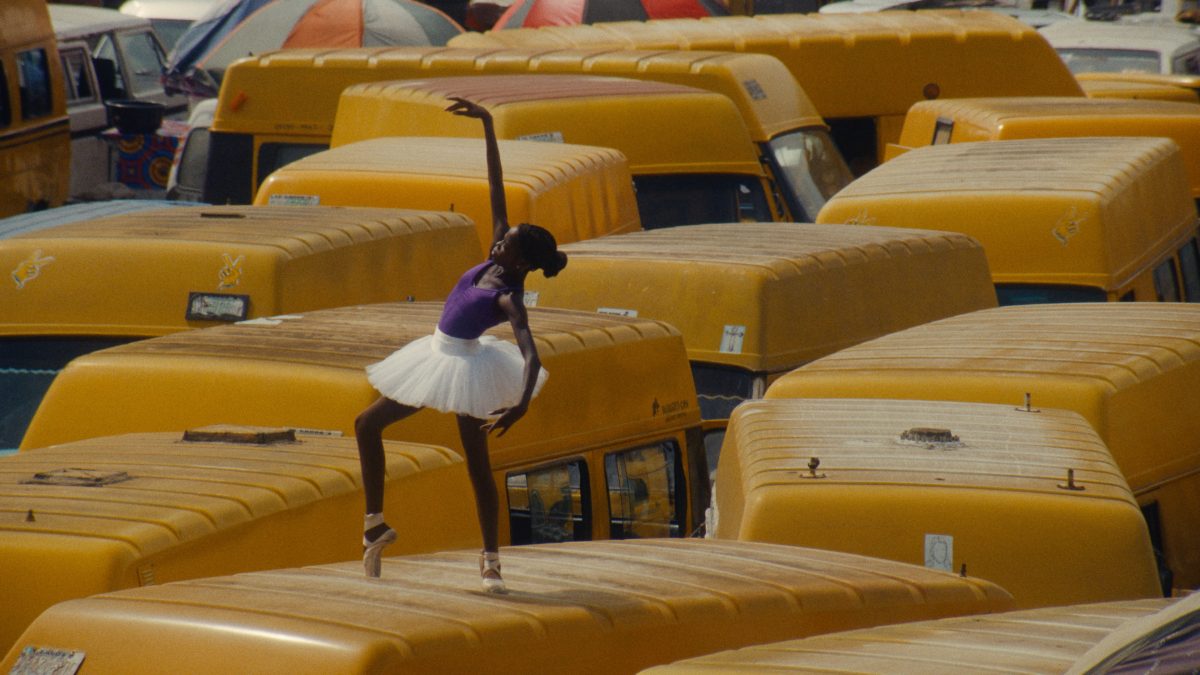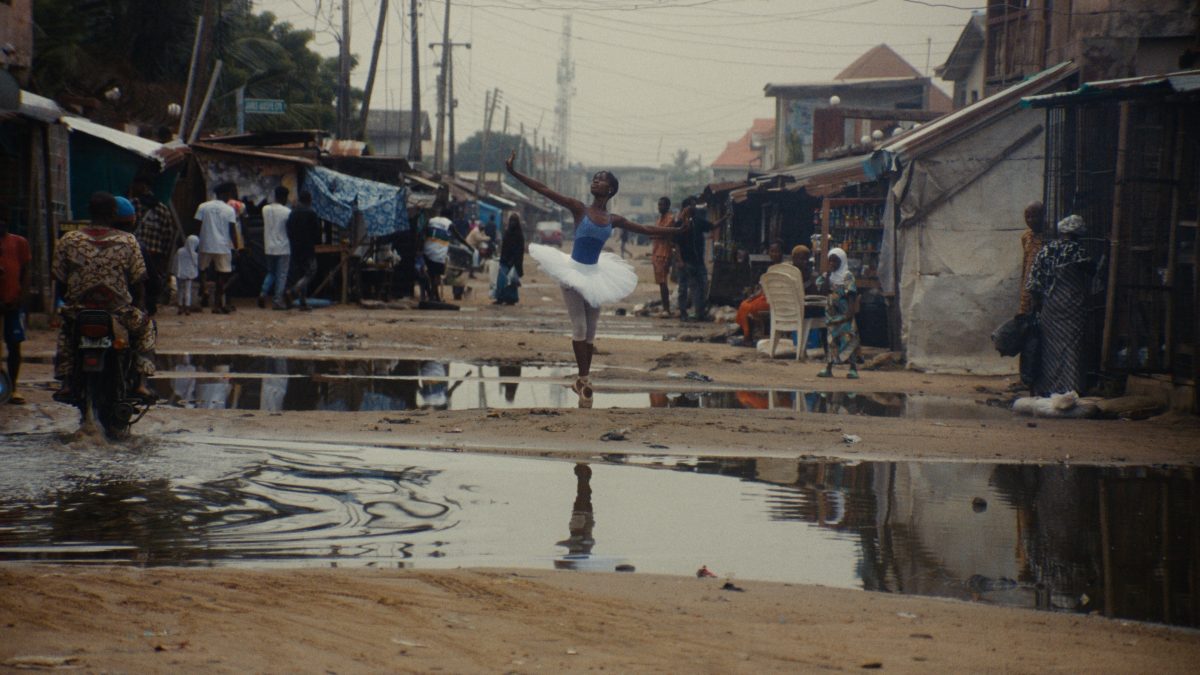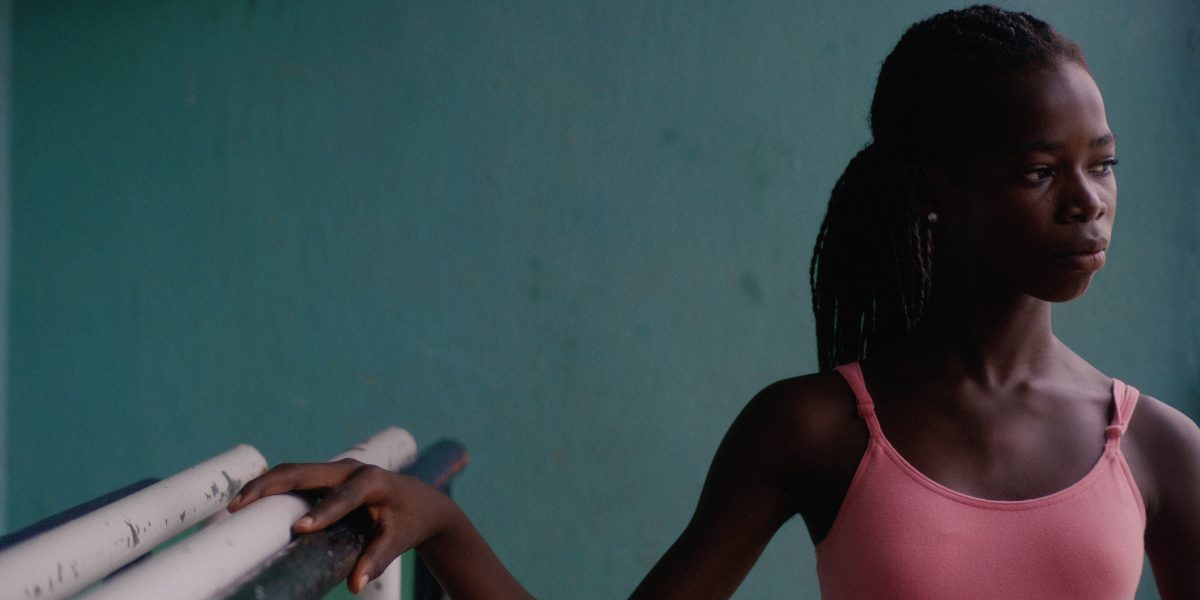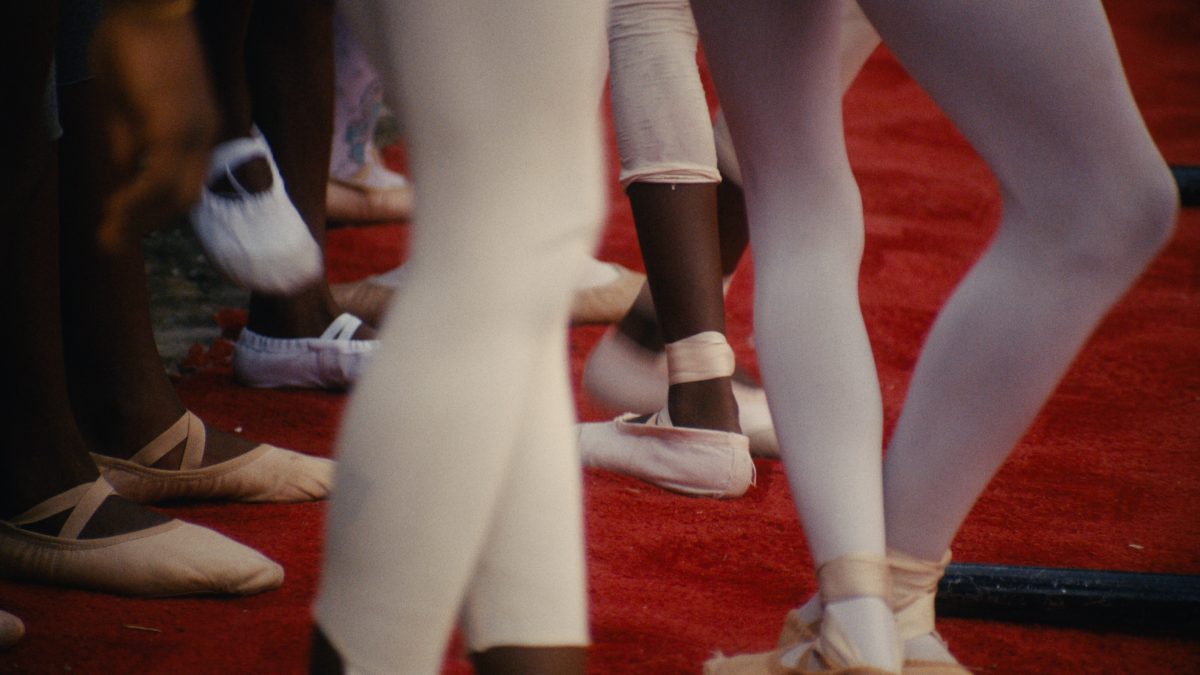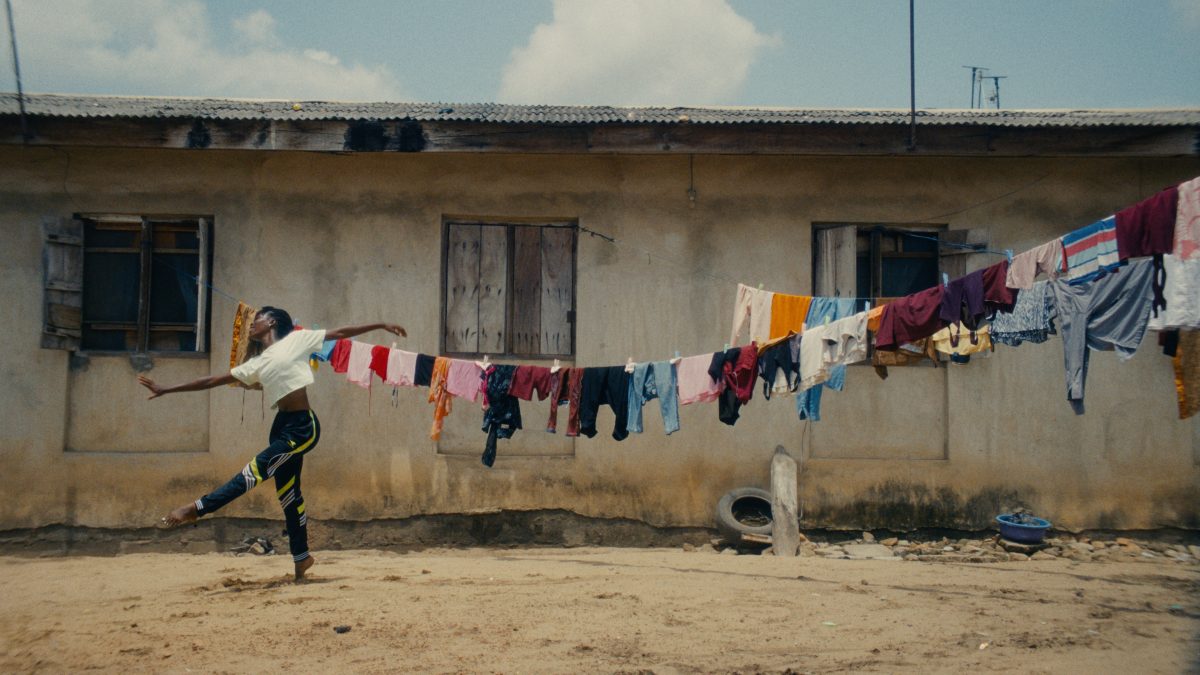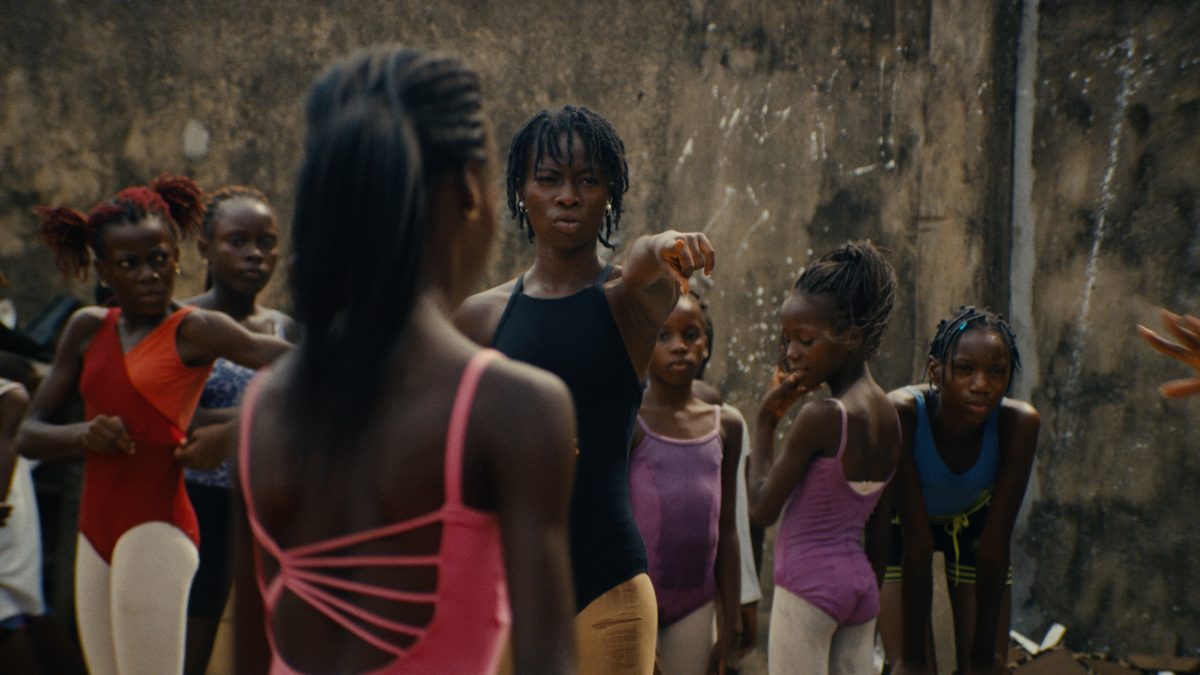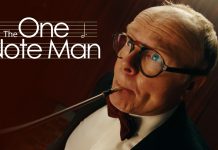A Nigeria native attempts to bring the joys of ballet to his local community in Jacob Krupnick’s short film THEN COMES THE BODY.
Film And TV Now spoke with the film-maker about the short.
Check out these two clips:
This is an incredible true-life story. When did you first become aware of Leap of Dance Academy?
I came across Leap of Dance Academy at the same time that millions of other people did: during the first summer of the pandemic, when their story went viral.
In the year that followed, I read everything I could about Leap of Dance, and enjoyed following their story playing out in public. On first glance, it seems like a prototypical feel good news story, but my curiosity kept growing about what life at this unlikely ballet school on the outskirts of Lagos really looked like. I wrote them every few months to try and make contact, but I think they were overwhelmed with inquiries.
Eventually, I connected with the founder of the school, Daniel Ajala, and explained that I was interested in telling a story with their community that reflected their experience more earnestly than anything I’d come across. I shared a number of dance projects of mine, and he introduced me over video calls to all the students. And that’s when the work really began.
It also has the bones of a potential full-length feature film. Are there plans to develop this into a feature film backed by a studio or streamer?
I’d love to keep working on this — and am also developing another feature-length dance film that’s a hybrid of doc and narrative. While I love dance, I’m also interested in using movement as a means for telling stories for people who aren’t necessarily dance lovers.
I think the Leap of Dance story is just in its infancy, and I’m honored to have their faith as a collaborator. I’m focused on sharing the film we have — and also working with students who are leaving the Academy and trying to figure out what direction to take their lives.
How long did it take to shoot? Tell us more about the locale the school is based in.
I spent ten days in Ajangbadi, a neighborhood in western Lagos, on the outskirts of the city. It’s a few hours in traffic from the center, and getting around is a slog. We chose to stay close to the school for most our time in Lagos, and much of what we filmed is set within a few blocks of the school.
While many of the students are terrific, Leap of Dance Academy isn’t a destination: the students live in the surrounding neighborhoods, for the most part. The area is very communal — everyone lives in shared space. It’s quite poor — water, electricity, sanitation are all inconsistent and in short supply.
While I’m not the best reporter, I’d say it’s an area of extreme contrast: there’s enormous warmth in people, but it’s also very territorial. There’s not enough food, but people are extremely generous with what they have.
Who and what are your key cinematic influences?
I’m a child of early-90s MTV. The way music videos created self-contained worlds has always been fascinating to me.
In terms of cinema, I gravitate towards feelings of immersion and commitment on the part of the filmmakers. In documentary, I’d say Errol Morris and Werner Herzog stand out — one as a patient analytical filmmaker, the other as a wild man. Both are relentless and wildly productive, which I admire.
A few narrative films that have felt like influences:
Battle of Algiers and La Haine both resonate for me as films that have blurred my sense of what’s real and not.
All These Sleepless Nights and Victoria have both felt like creative cousins to my work for how they use movement and pacing and music in ways I admire.
I just watched Godland, and couldn’t believe how the pacing and environment had such a strong impact on feeling cold and adrift.
You focus on expression through immersive dance. Tell us more about the virtues of storytelling through this.
I love creating work that’s got something universal to it. The story has to be specific to a character, a place, a moment — but it’s a fascinating challenge for me to try and reach for a kind of storytelling that doesn’t rely on language.
That pathway is through using dance — but it also requires music for mood, and environments for context — and it just makes me inherently excited. It can be subversive and funny and rich in ways that are more interesting than what I dream up with dialogue.
When we were touring with Girl Walk // All Day, we’d put the film on several screens and typically share it in places where people could stand or move. I wanted it to feel like church without the religion, or a sports game without having a team to root for.
Tell us more about your debut feature GIRL WALK // ALL DAY.
My first feature film had a life of its own.
I jumped from photography to filmmaking when the cameras I owned started shooting video. eA classic story for people around 2010. Not long after, I made a feature-length dance film called Girl Walk // All Day set in the public spaces of New York. It was an early Kickstarter project, and an act of committed amateurism… I wrote, shot, directed, and edited the piece with the help of some ride-or-die allies.
We caught a series of waves in the internet-attention-economy. Clips blew up online; film festivals were thrilled to invite us to share and put on performances, and we began helping people all over the world host their own interactive screenings with dance, DJs, and other events. The film played everywhere from the oldest chapel in New York to a fjord in Icelend; Bonnaroo to Mass MoCA. It was completely wild.
Has Daniel and the school seen the film and what do they think of it?
They haven’t seen the final piece yet!
I’m organizing an outdoor screening for the Leap of Dance Academy so the community can see the finished project in the same way that people at Tribeca will see it: big and loud.
You base your films around themes of identity and public space. How do you dovetail the two into your subject matter?
Inside my own head, I’m an overthinking, academic nerd — but I want to make films that have a more immediate impact. My goal is always to create work that shimmers with delight, but leaves you curious or thoughtful.
I wrote my thesis on the history of the shopping mall and how shopping plays a role in identity formation. One of the sociologists I studied, Erving Goffman, wrote abook called The Presentation of Self in Everyday Life. Framing our experience of being out in the world as being like performers on a stage is super compelling to me.
As someone who grew up in New York City, I’ve always loved watching how space is used and repurposed, and how people shift their identities to suit new venues.
How has the festival circuit helped your film?
Then Comes The Body will have its world premiere at Tribeca this year — and I’m thrilled to see where it goes next.
Finally, what are you most proud of about this short?
Projects like this are the result of so many small acts of faith and hope and generosity. Anytime you go out into the world to make something, it’s a bit of a gamble. Time, money expectations — there’s so much to figure out.
I’m enormously proud of the film, and beyond that, I’m just so damn grateful to have had so much enthusiasm from our partners along the way. From Precious and Olamide and Daniel: this goes without saying, and you can see it on screen. Our DP, Soren, jumped aboard as soon as he heard the story.
Our Nigerian producer, Damilola, responded to my first WhatsApp message with instant humor and positivity. And even on the post-production side — which is removed from the adventure — we’ve had a rare experience where people are uncommonly excited by the work. There’s just no better feeling than that.


